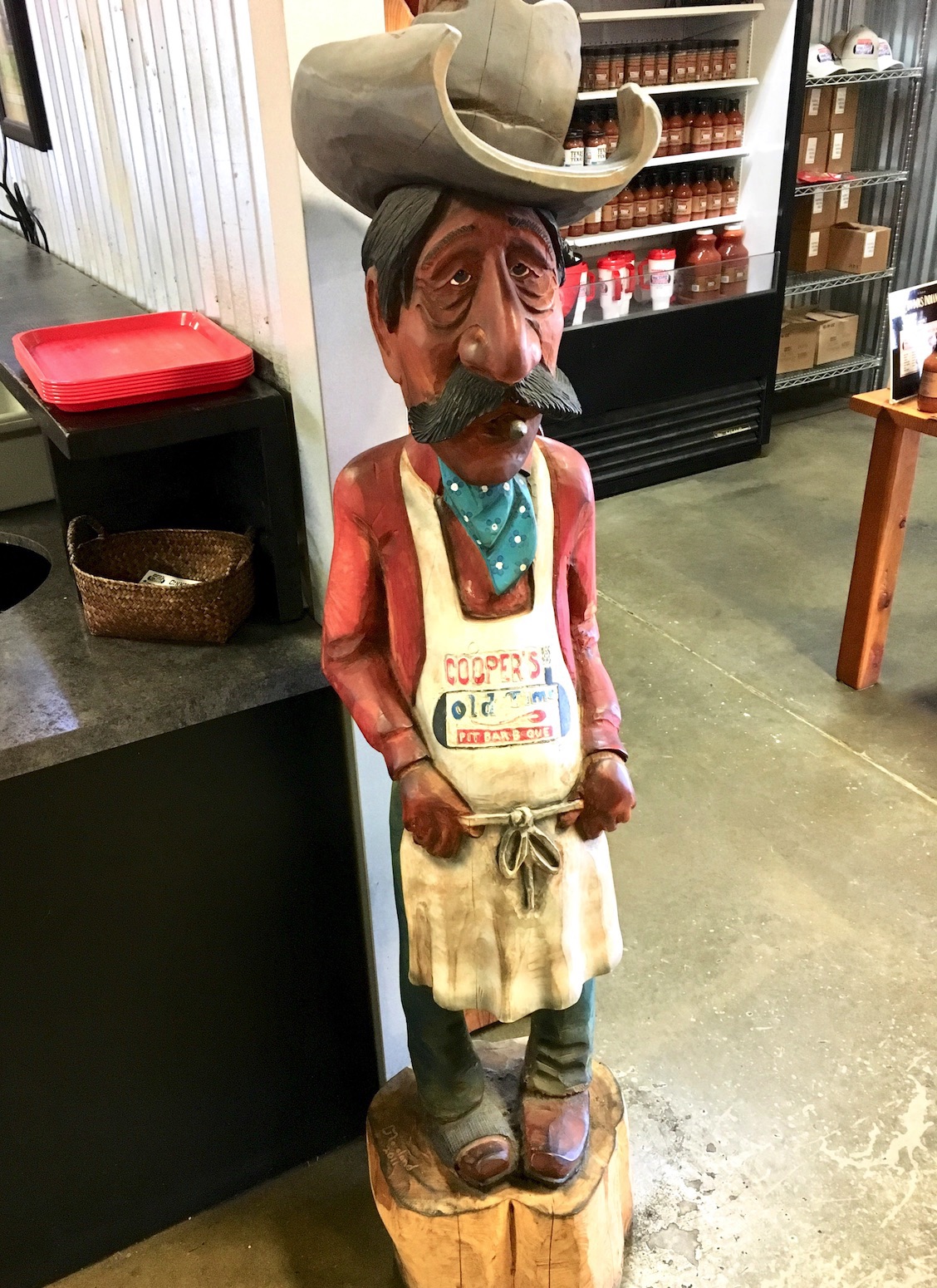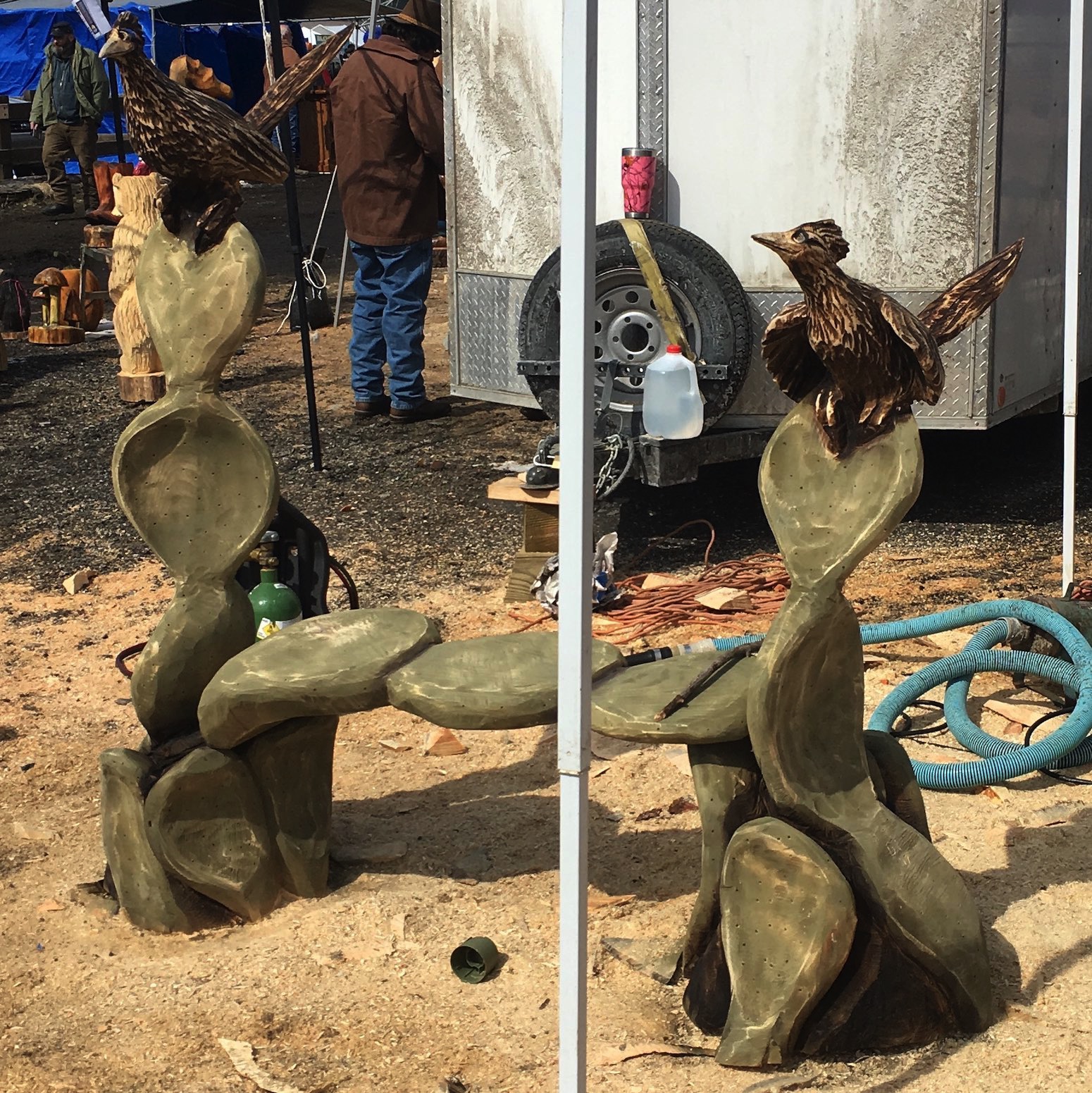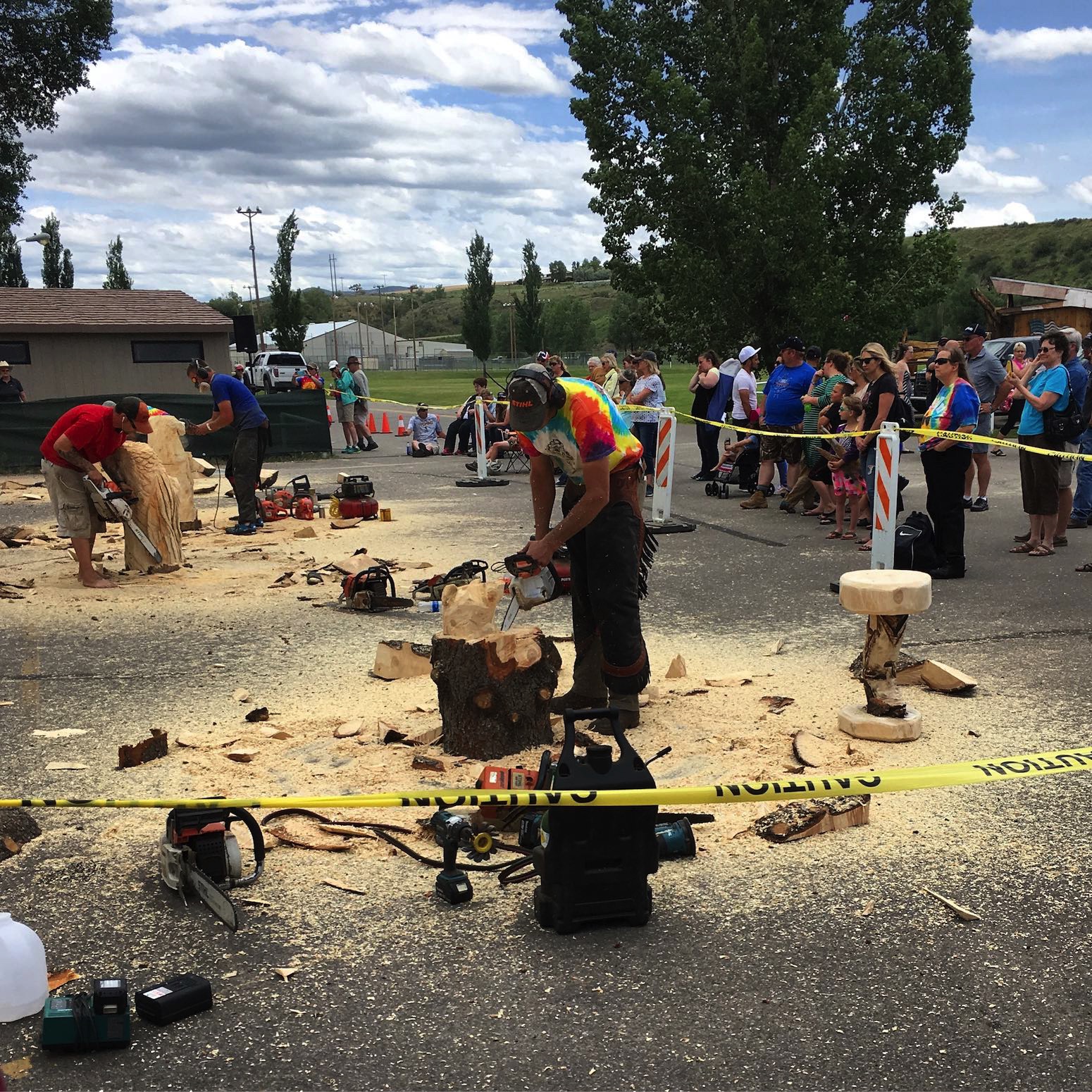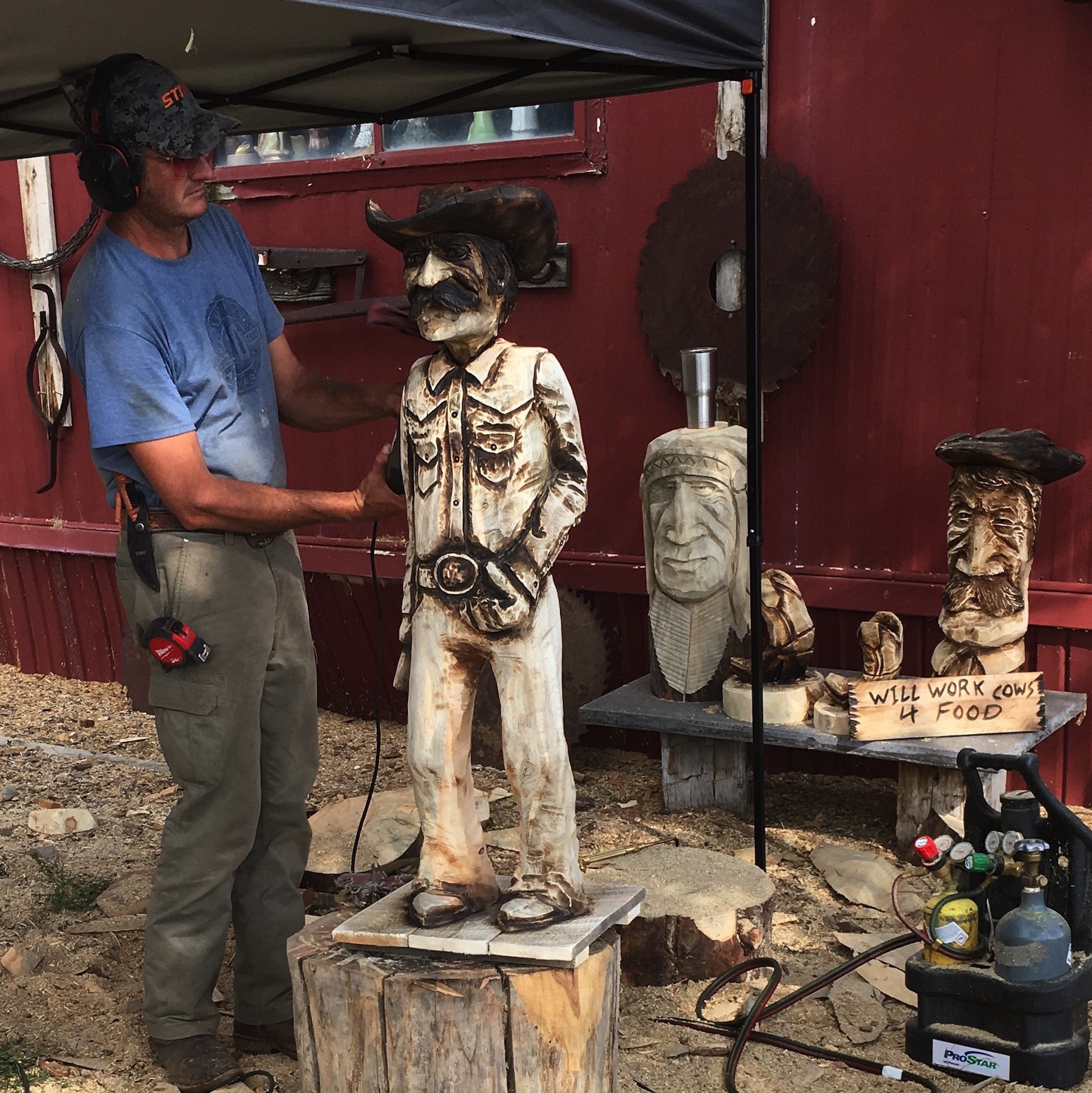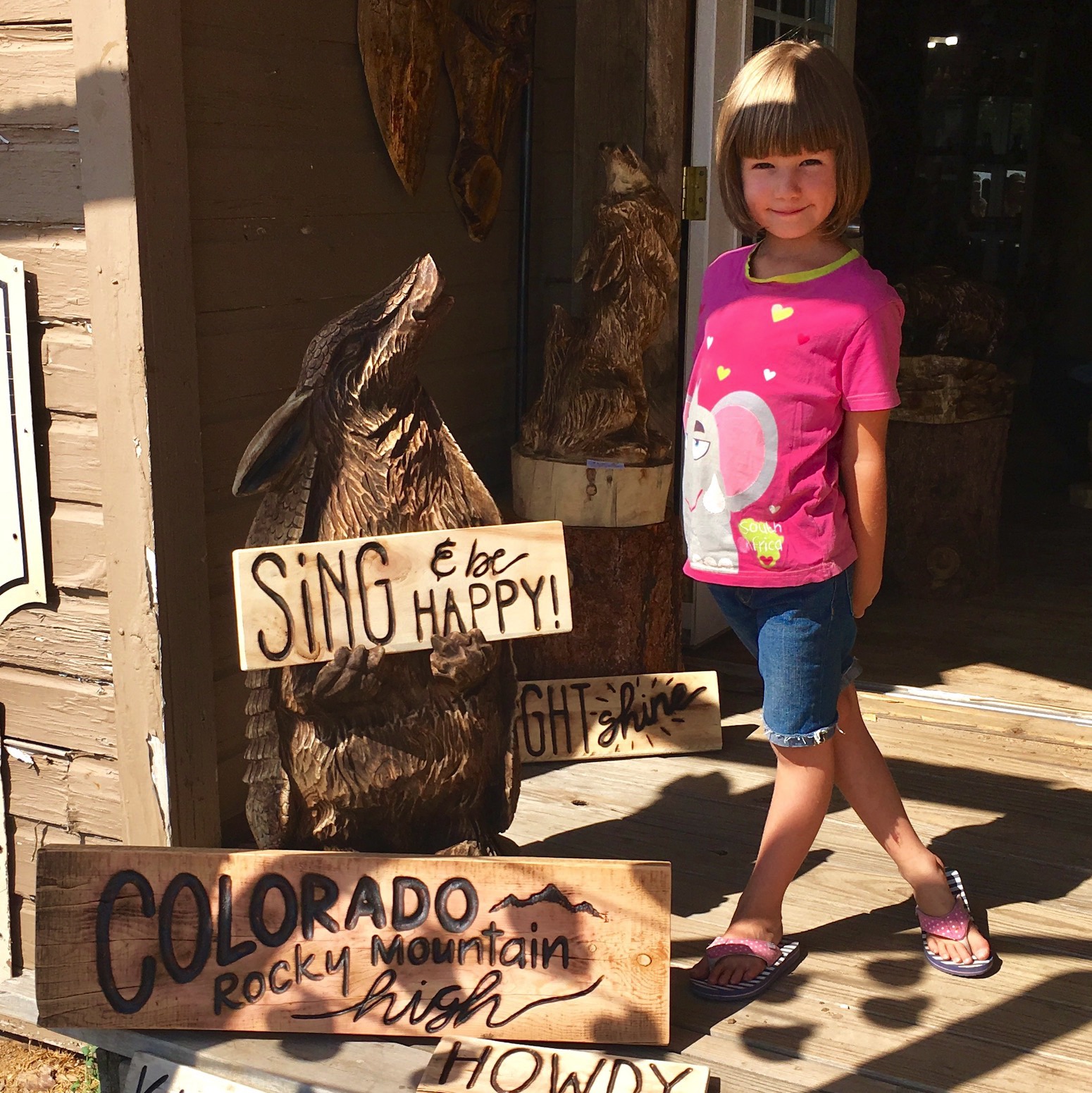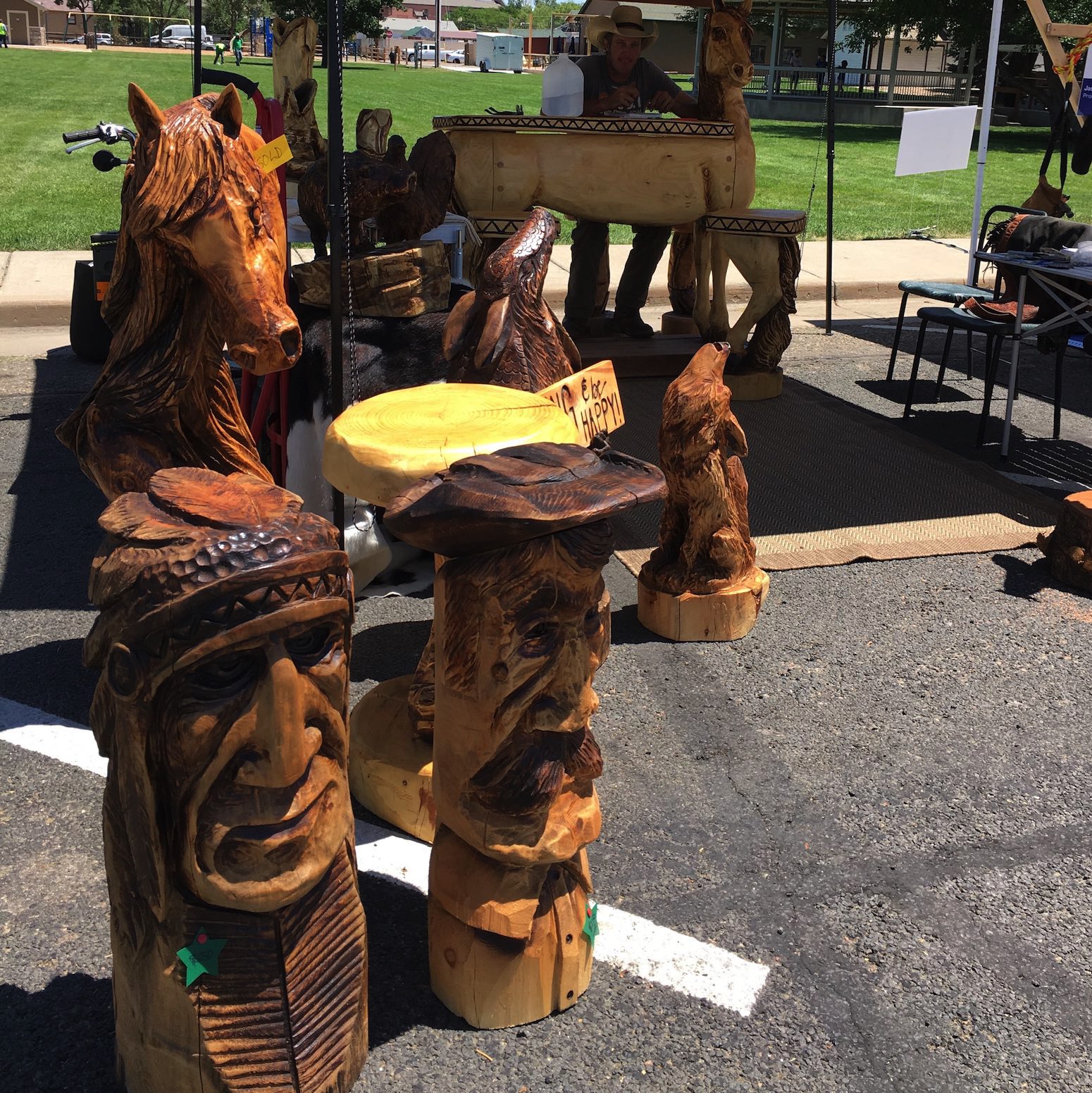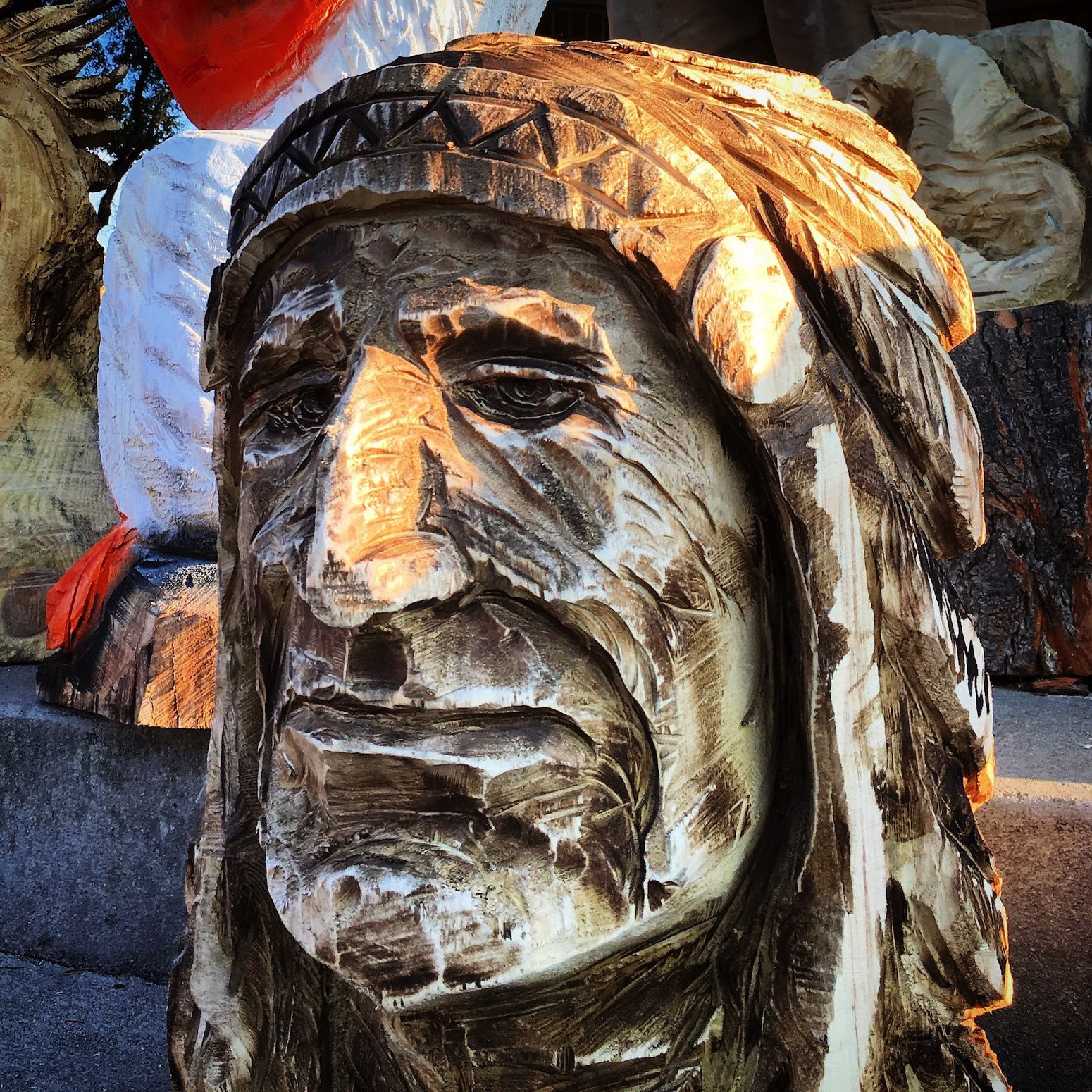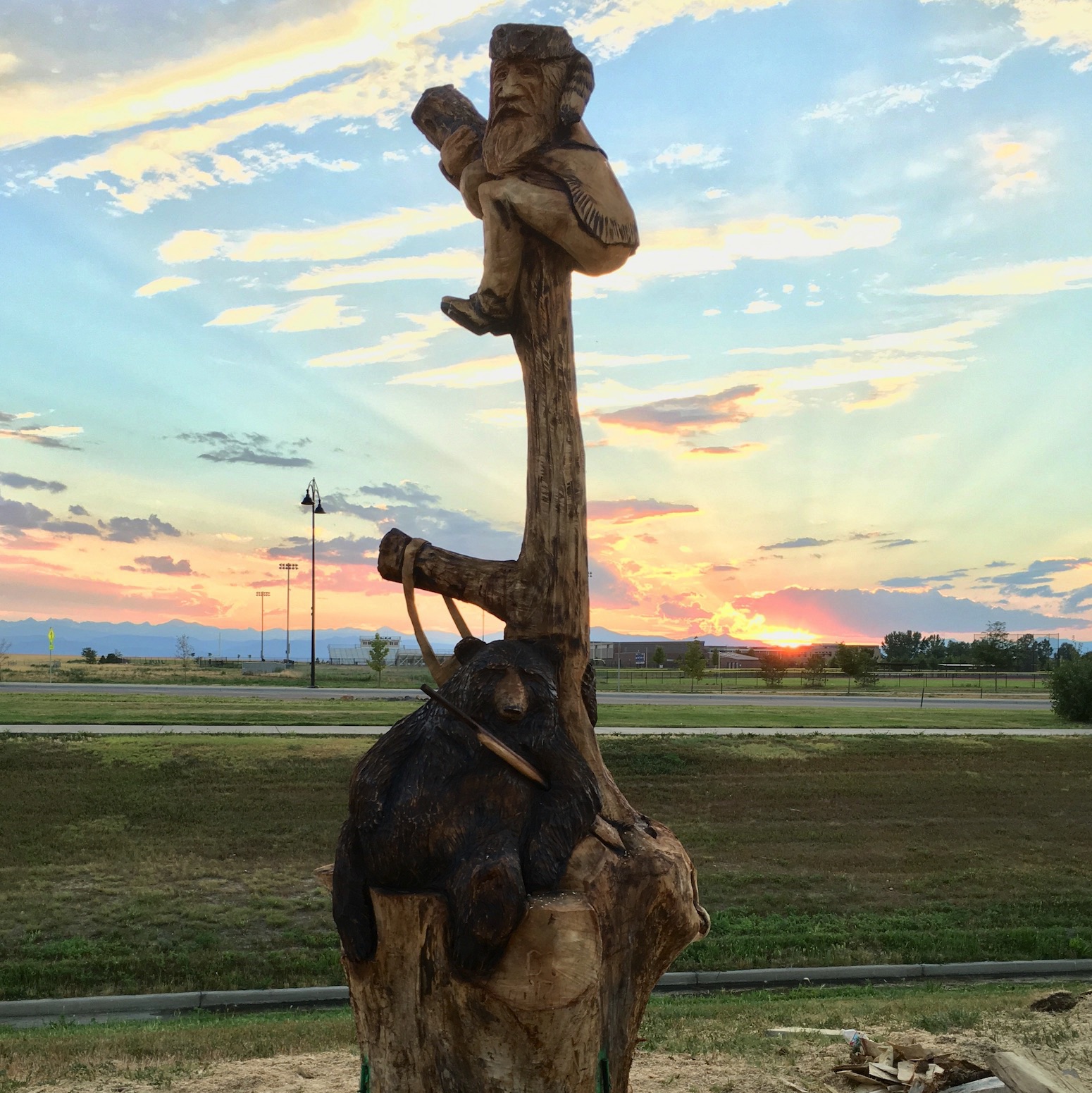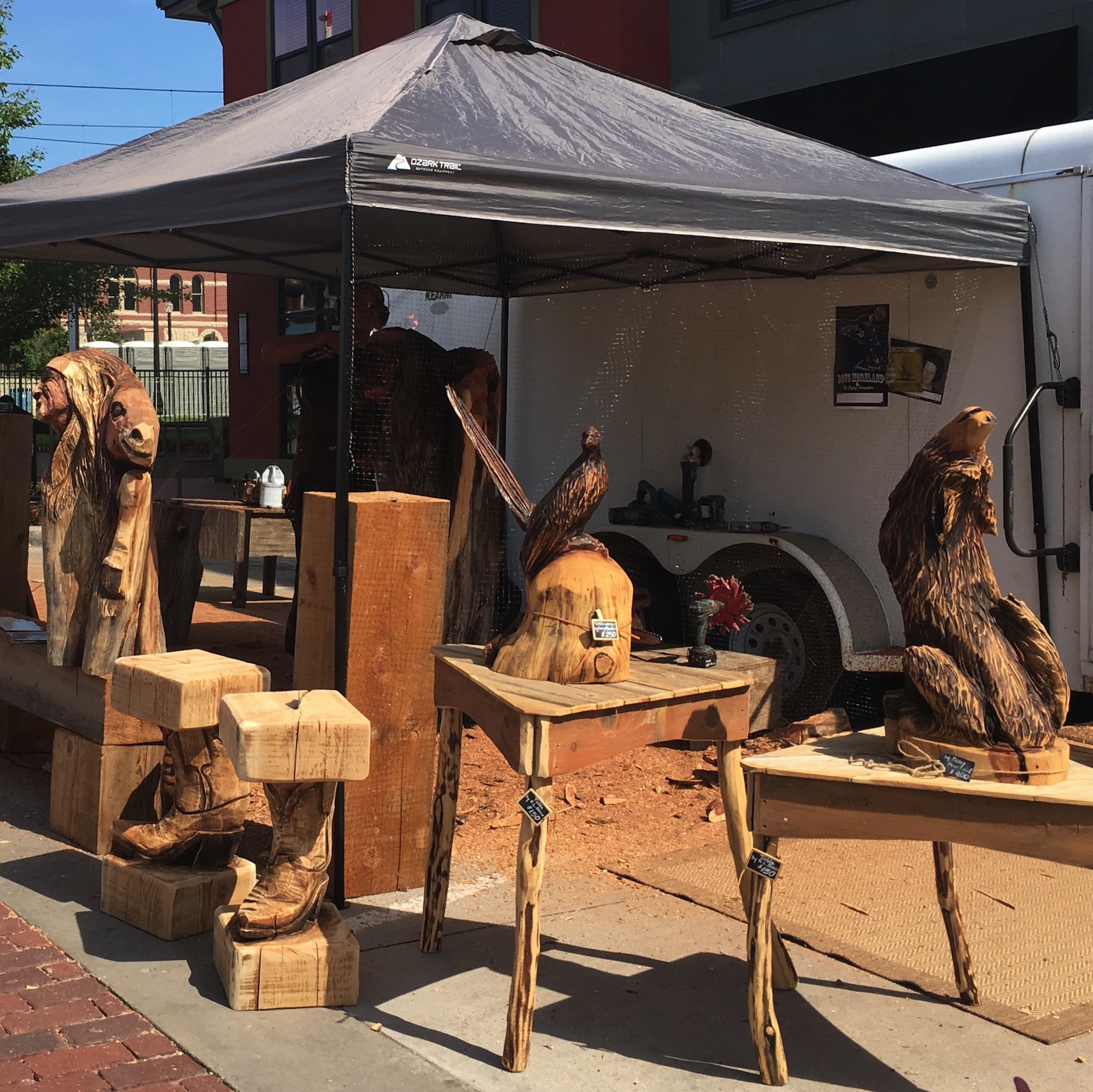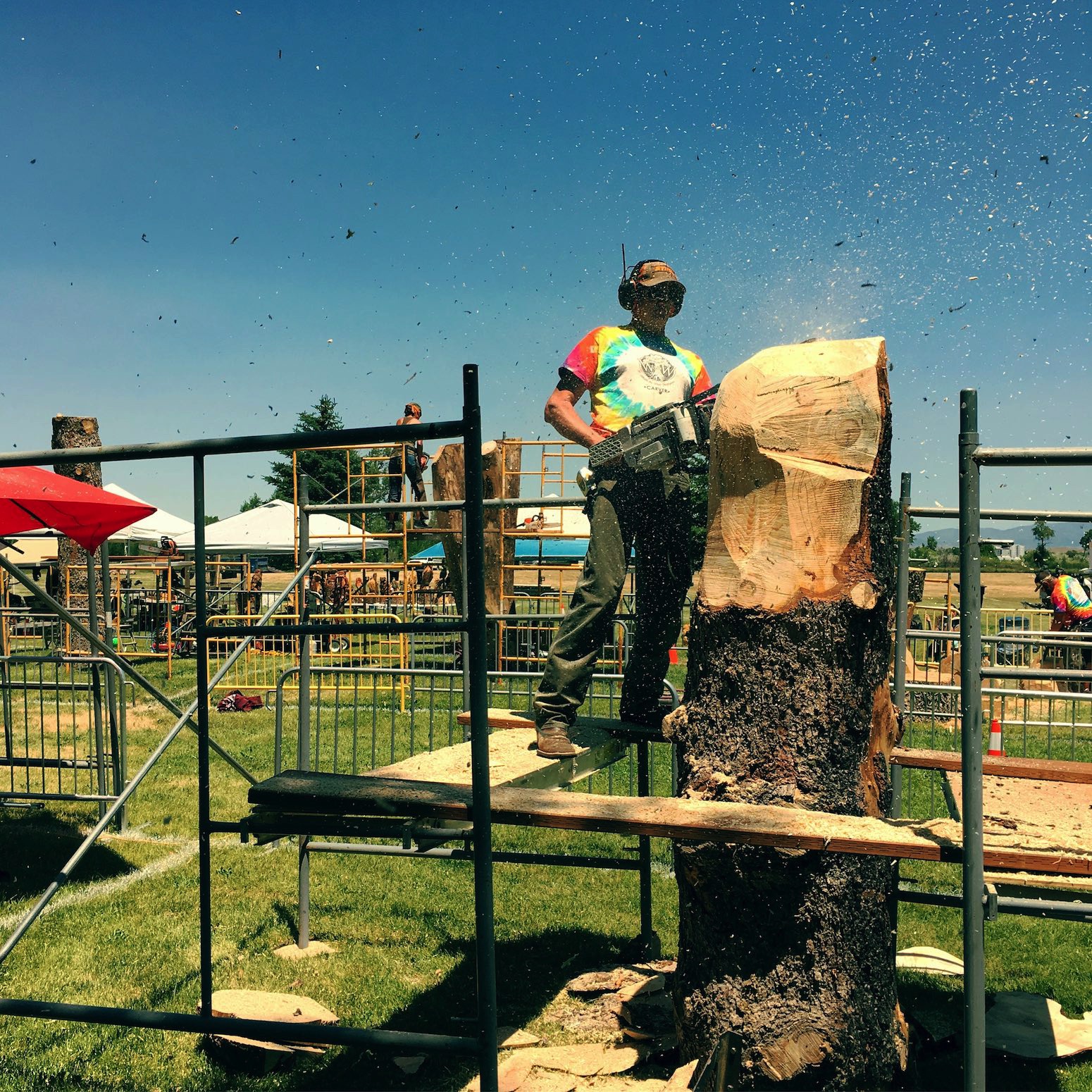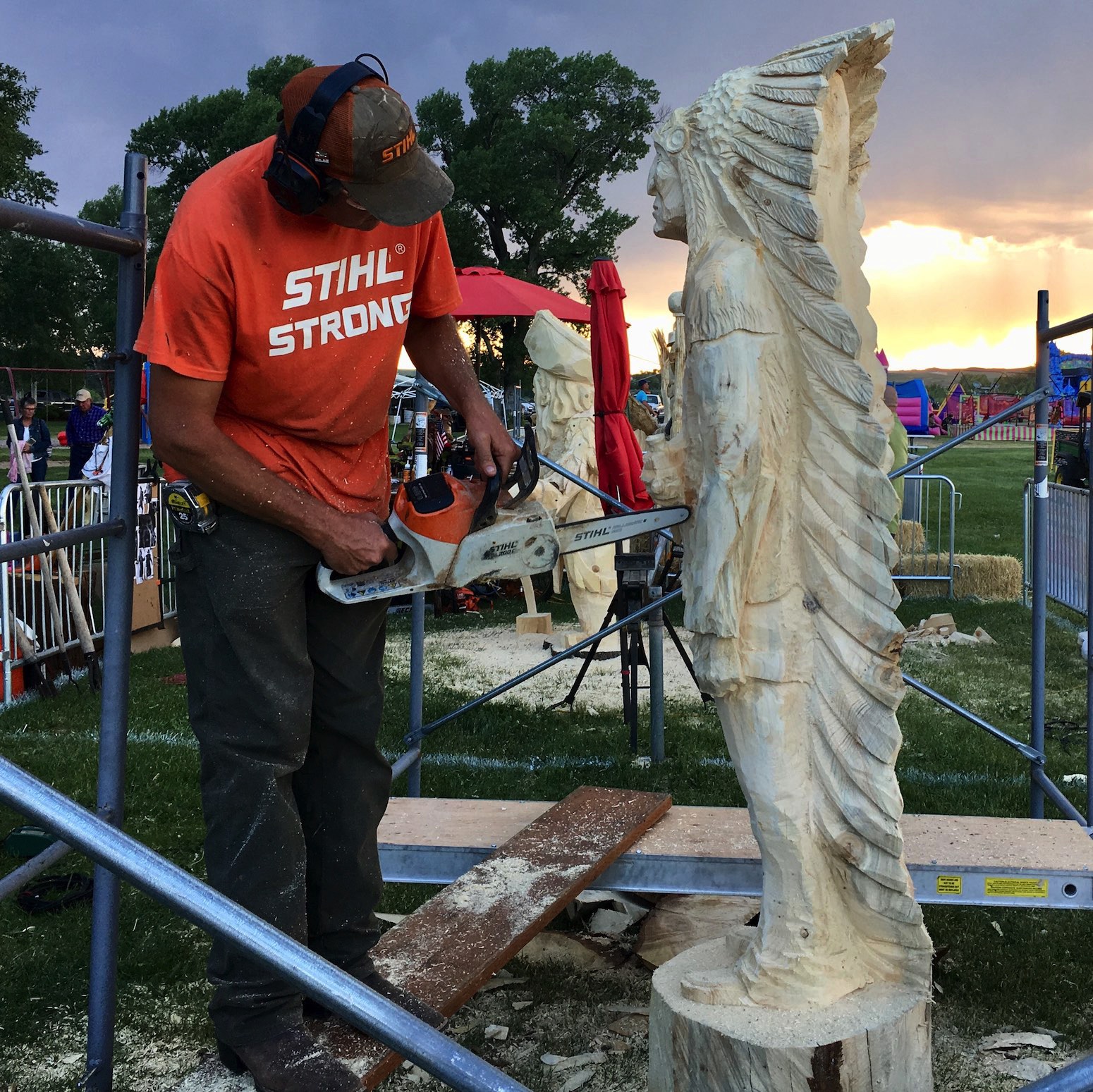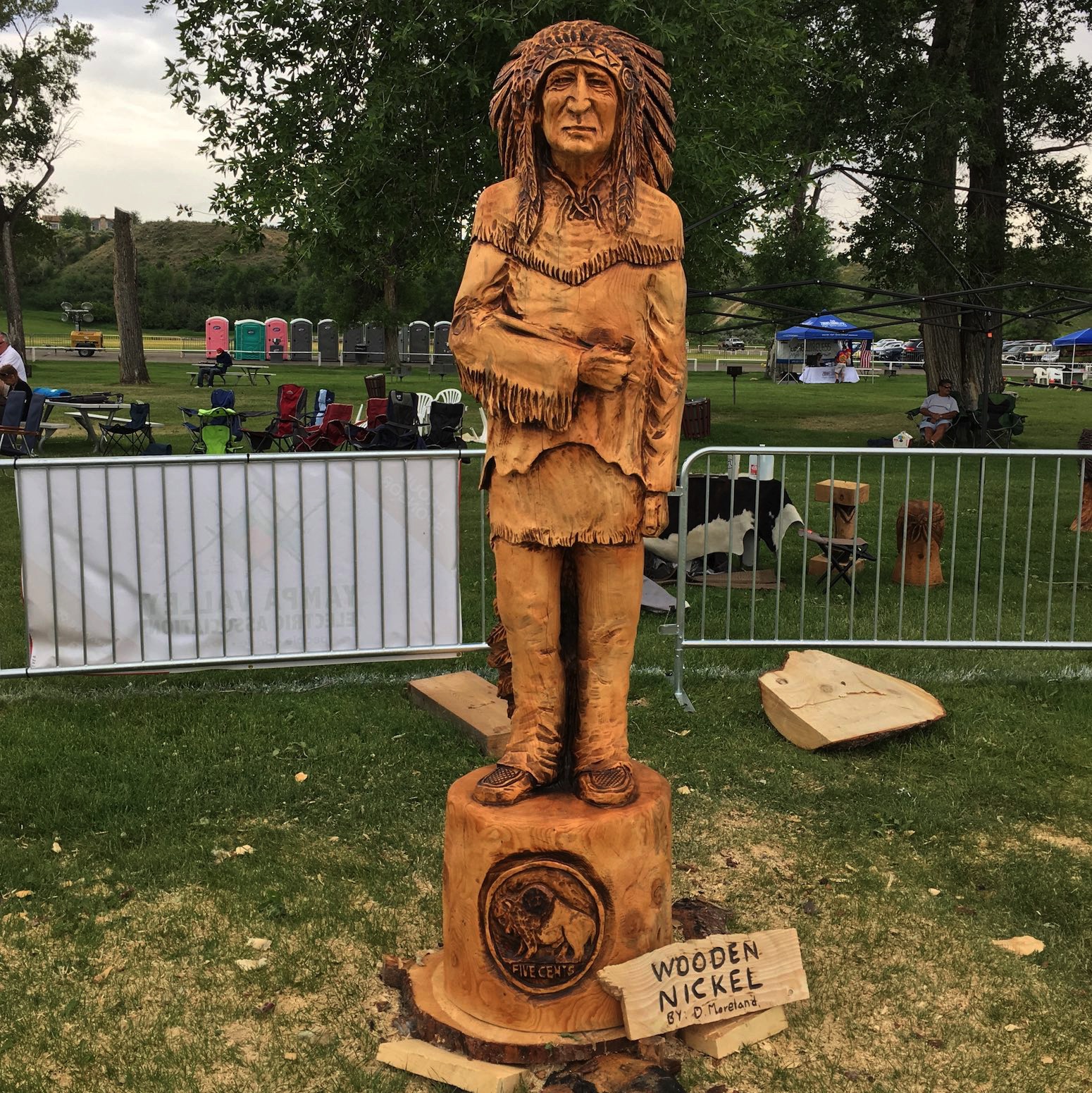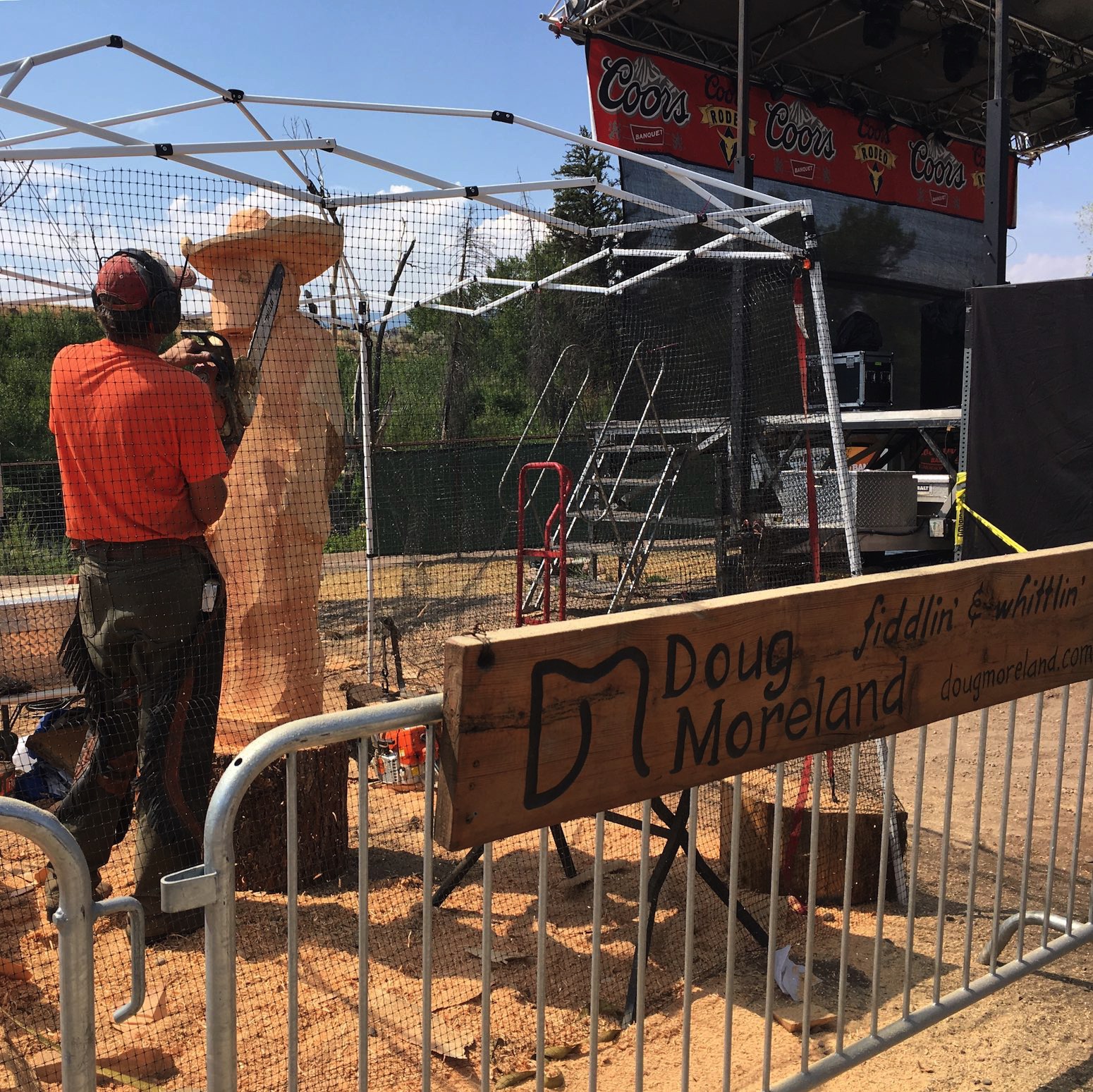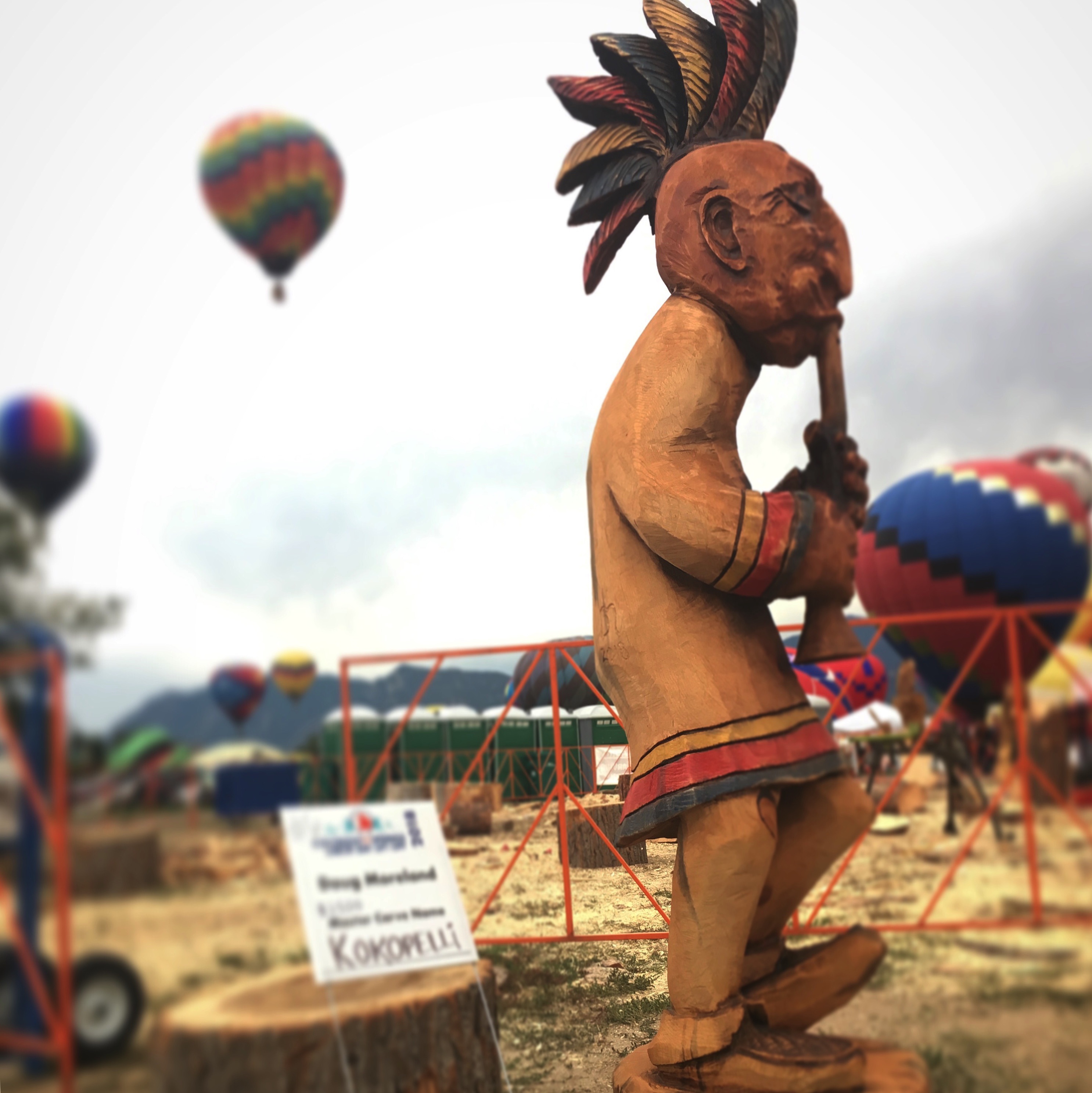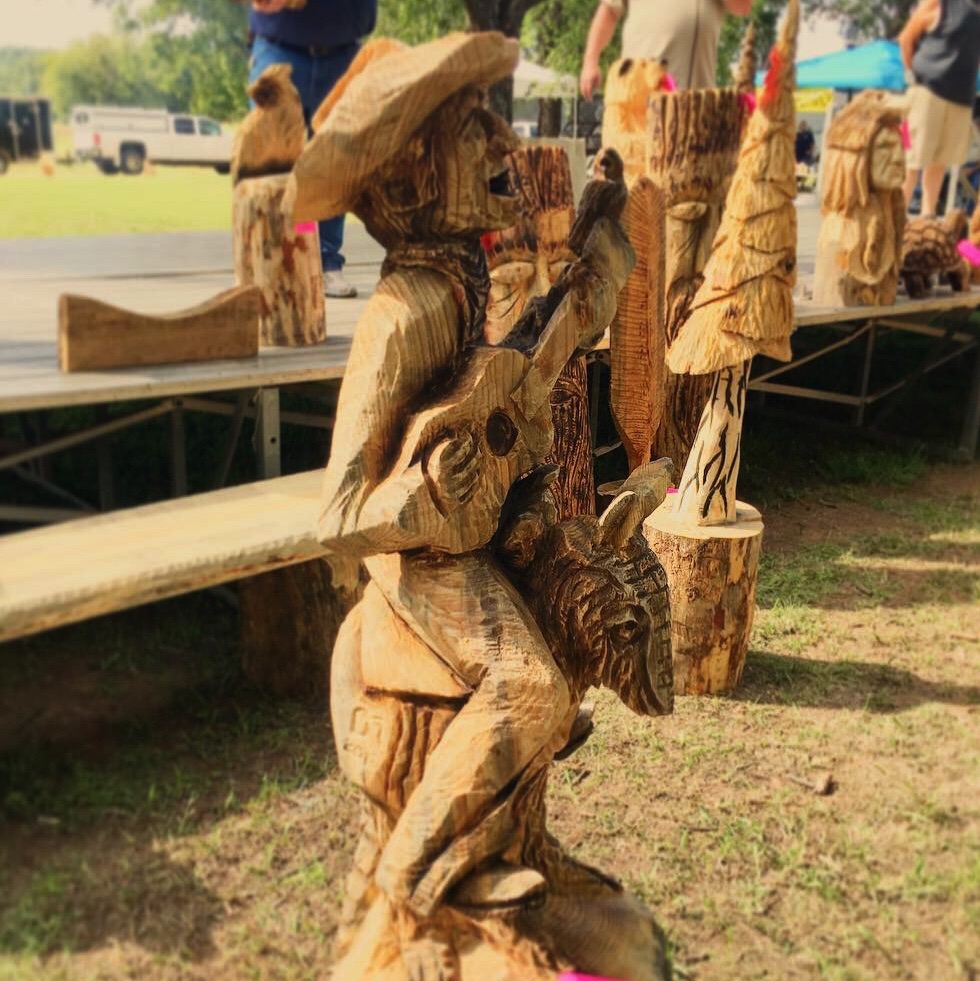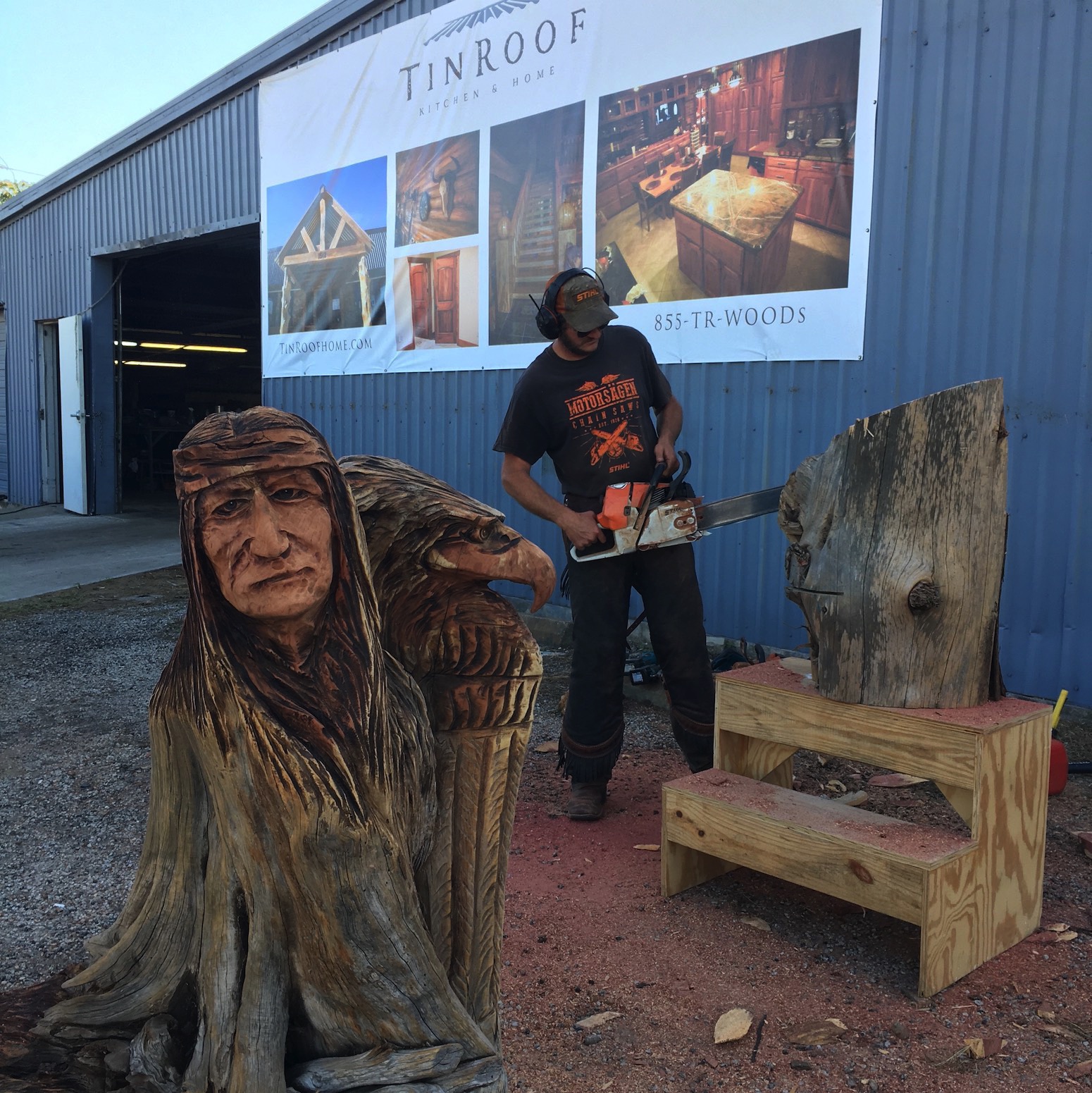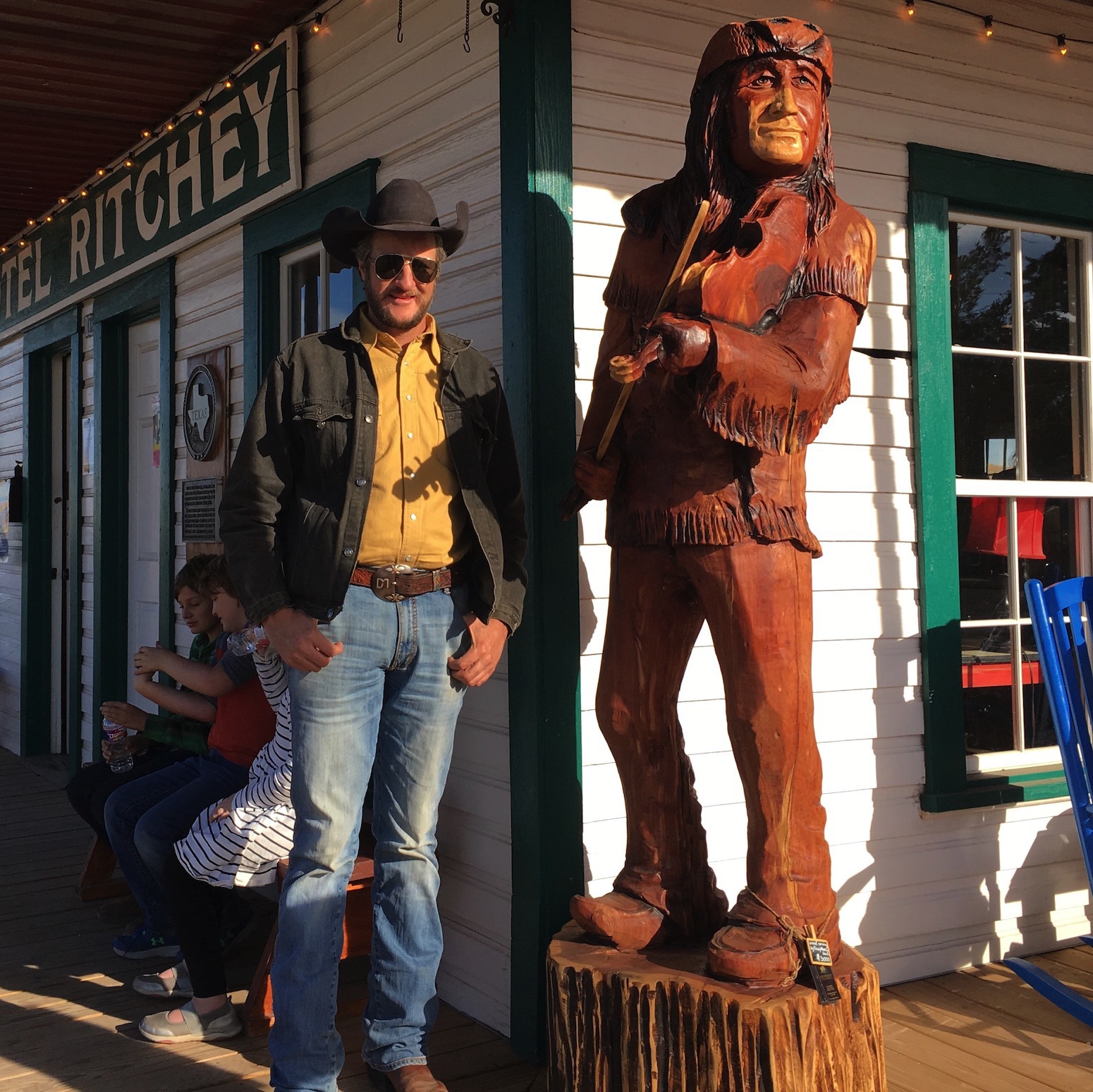

FAQs
How long have I been carving?
My dad Glenn Moreland has carved little cowboys and western art by hand for many years. I learned this style from him as a kid, but never acquired his patience for it. In 1998 (24 years old), I discovered chainsaw carving in Ruidoso NM. The chainsaw was so much faster and the carvings bigger. I was hooked! The following day, I convinced my whole band to quit our gig, buy chainsaws and move to Pigeon Forge TN and set up! A few years later I established my woodcarving shop just south of Austin TX, and providentially attracted the interest of the master woodworker RL Blair! RL also started as a kid whittling with knives, but picked up the chainsaw in about 1970 (also around age 24!). I was fortunate to work alongside him from 2009-2018 and I learned many tricks from him. RL left this material plane in 2023, and I have missed him immensely.
I am now in far west Texas and sometimes found carving in downtown Fort Davis. My dad works a few blocks away at his home and wagon shop, but doesn’t carve as much anymore. I did get him to try out chainsaw carving once, but he prefers the quiet rhythm of hand tools! Go figure, he restores wagons, while RL and I love motors and engines!
Have I ever cut myself?
No. I still have all my limbs, fingers, and toes. All power tools can be dangerous, but used properly, they are still safer than using knives for hand carving, in my opinion. I did have a minor accident with a grinder once, which taught me to keep my shirt tucked in from there on out. There is one highly dangerous tool that I always recommend staying away from, and that is the Lancelot.
Do I take custom orders?
Yes I do, sometimes, if I find it interesting. Fair warning, if it's not something I really want to do, it rarely turns out well.
Do I carve onsite?
Sometimes I do, depending on the wood and your location. Hardwoods, like oak, are very hard to cut, they crack, and they rot rather quickly when still rooted in the ground, making it not worth the cost or effort. I prefer to work with softer woods like juniper and pine, which contain more oils, keeping bugs out and crack less. Also, older trees in yards have buried nails and other objects deeply embedded under many years of growth and are dangerous when cutting through with a chainsaw. I’ve heard it’s possible to use a metal detector to check your tree, but I usually turn these requests down, for all of the aforementioned reasons. Also, I have moved to FAR west Texas and don't frequent central Texas much anymore. If you insist, email me your details (location, tree species, photos), and I will take a look. You will need a tree trimmer to take down large, unneeded limbs. I don't have the equipment for that.
Do I want your wood?
If you have cedar or juniper (not Hill Country Ash Juniper - it has crevices that just never work out well) or cypress or pine, yes. The softer woods have oils that keep them from drying out quickly and cracking, and it also keeps bugs away. It is much easier to carve and doesn’t rot. Hardwoods like oak and mesquite are difficult and slow to carve, and pecan gets a fungus very quickly. Those woods make better furniture after being kiln-dried, and that’s just not my specialty.
How can my carving be best preserved?
Around 2009 or so I started coating most all of my carvings with a clear, water-based, low VOC, UV protection sealant called “CWF by Flood”. Placed out of direct sunlight and off of any wet surfaces, these carvings seem to do fine outdoors (like on a covered patio) and may last many, many years. If your carving has been outdoors and weathered some, another coat of this paint may help. If it was made before this, I may have used a clear polyurethane on it and it may need sanding and refinishing.


